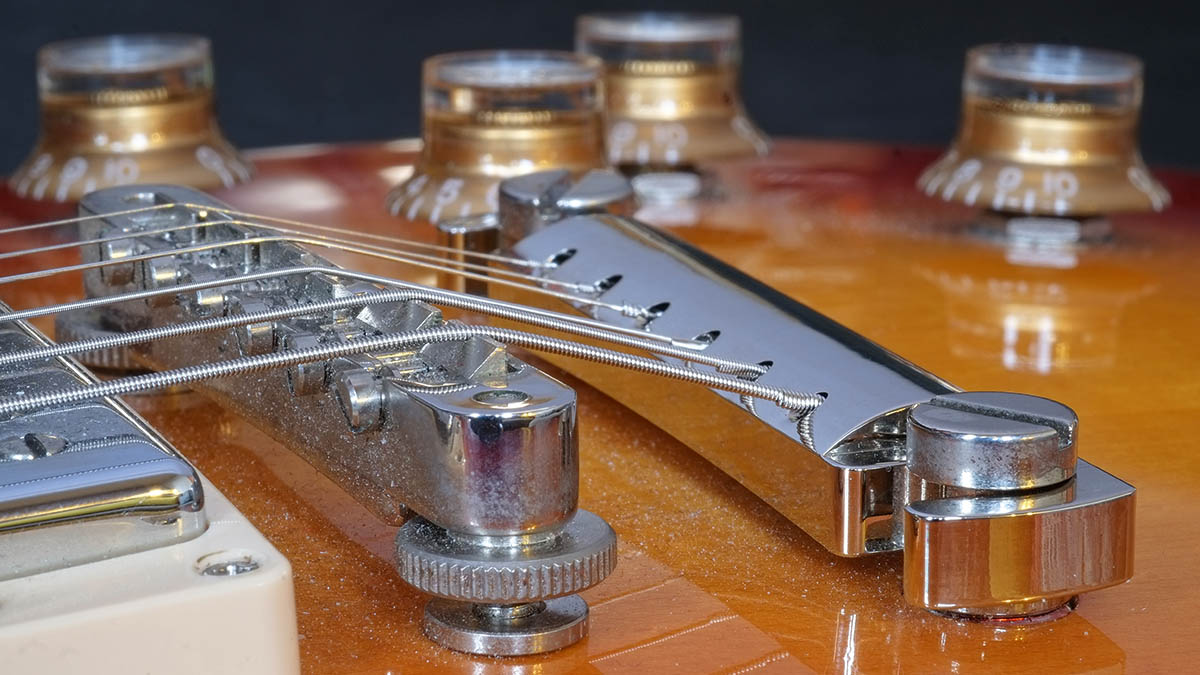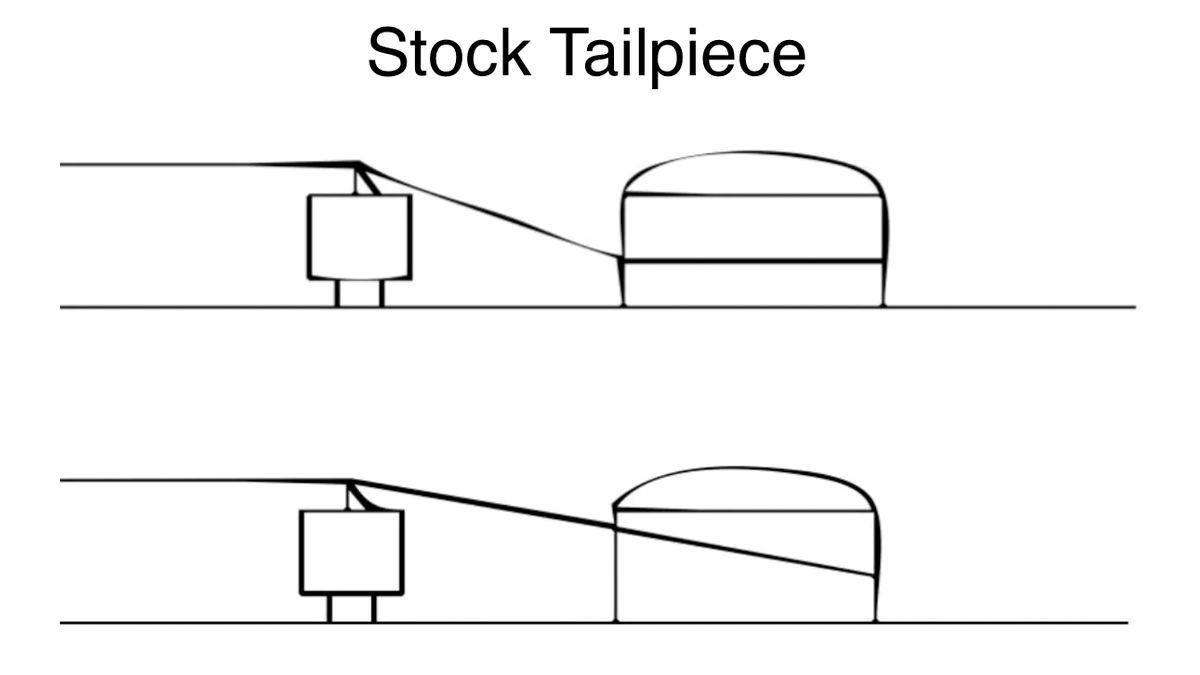Meet the Lightning Bar, the new Gibson Les Paul mod that might have just settled the top-wrapping debate once and for all
Les Paul aficionados have long been divided over the string-through method or top-wrapping their strings. With the Lightning Bar, you can screw the tailpiece and enjoy the more acute string angle

If you’re into your guitar forums, you’ll have definitely seen a debate or three on the benefits of ‘top wrapping’ your Les Paul’s stud or stop tailpiece over sticking with the standard string-through method. Does it really make any difference?
Well, plenty of people have strong opinions on both methods. While the string-through method is by far the most common, author Robb Lawrence in The Early Years Of The Les Paul Legacy: 1915-1963 states that “originally these items [the stud or stop tailpiece] were depicted in the catalogues and shipped normally with the strings over the top of the tailpiece (the way it was designed).”
Exactly when the stringing method changed I have no idea, but in The Beauty Of The ’Burst by Yasuhiko Iwanade, of the 80-something ’Bursts pictured only two are top wrapped – one of which is Billy F Gibbons’ ‘Pearly Gates’.
With the stud tailpiece screwed right down onto the body, which many people believe to maximise string-to-body vibration, the string angle of the string-through method is at its steepest.
If the tune-o-matic sits quite high (neck angles do vary), especially if your guitar has a wider Nashville-style tune-o-matic, the electric guitar strings might catch on the back edge of the bridge, which looks a bit untidy and may cause some tuning problems, not least on the wound strings. Subsequently, you might then want to raise the stud tailpiece a little.

However, when you top-wrap the tailpiece with it still screwed fully down, the back-angle of the strings is reduced, so it’s less steep. If you palm-mute a lot, you might find this marginally more comfortable and, in theory, there might be a slight difference in the perceived feel of the strings: steep, stiffer; less steep, slacker.
Over time you’ll mark the top of the tailpiece, too, which could be a concern if you want to go back to the string-through method or sell on your guitar.
Get The Pick Newsletter
All the latest guitar news, interviews, lessons, reviews, deals and more, direct to your inbox!
Chris Peace of UK-based Lightning Guitars has sort of combined the two methods with his Lightning Stop Bar, a beautifully CNC machined, lightweight aluminium stud tailpiece, which at 32 grams is actually four grams lighter than the Gibson tailpiece it replaced. It’s designed for strings-through but angles the string holes up, so the strings exit much higher on the tailpiece.
This means you get that less steep angle of the top-wrapping method, but the tailpiece can still be screwed down hard to the body. Unlike the Gibson part, and most others, the string holes aren’t radiused.

“The Lightning Stop Bar has all the benefits of top wrapping without the damage or aesthetic issues,” says the website. “The Lightning Stop Bar can be positioned as low as it can go. Your usual gauge strings will feel lighter and easier to play and are a lot less likely to break, and moving up to a heavier gauge string set will feel about a gauge lighter, too.”
Chris also tells us the Stop Bar should fit any guitar. “I get asked that a lot: does the tailpiece fit on Epiphones? But I’ve designed it to fit everything. Put it this way, I haven’t found one yet that it doesn’t fit.”
Fitted onto a Gibson Les Paul Classic, any ‘lighter’ and ‘easier’ to play evaluations are at best difficult – not least with new strings – but the geometry of those exit holes is certainly putting less back-angle on the strings and it’s one of those ‘why didn’t I think of this?’ moments. It ain’t vintage-spec, but it’s very cool.
- The Lightning Stop Bar costs £59.99 in bright nickel or chrome; pre‑worn nickel version is £64.99. Gold and chrome are priced at £62.99. Find out more at Lightning Guitars.

Dave Burrluck is one of the world’s most experienced guitar journalists, who started writing back in the '80s for International Musician and Recording World, co-founded The Guitar Magazine and has been the Gear Reviews Editor of Guitarist magazine for the past two decades. Along the way, Dave has been the sole author of The PRS Guitar Book and The Player's Guide to Guitar Maintenance as well as contributing to numerous other books on the electric guitar. Dave is an active gigging and recording musician and still finds time to make, repair and mod guitars, not least for Guitarist’s The Mod Squad.
“Wins out on battery life, stealthy aesthetics and its well-judged Cable Tone feature”: Blackstar Airwire i58 review
“A distinctive brightness that no other strings have been able to capture”: How Rotosound revolutionized the bass world with its Swing Bass 66 strings – and shaped the sound of rock music in the process










